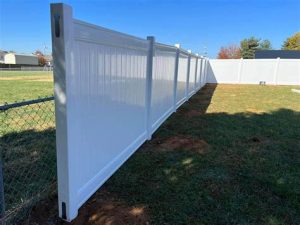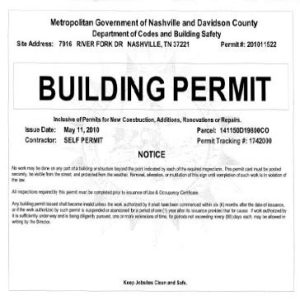Navigate local regulations, gather documentation, complete permit applications, submit for approval, and follow inspection guidelines with our comprehensive guide.When planning to install a residential fence, it’s crucial to navigate the permitting process effectively to ensure a smooth and compliant installation. Fencing not only enhances the aesthetics of your property but also provides privacy and security. However, before breaking ground, homeowners must familiarize themselves with local regulations that govern fence installations, as these can vary significantly by area. This blog post will guide you through the essential steps of the permitting process, from understanding local regulations to gathering necessary documentation and submitting your permit application. Additionally, we’ll discuss the importance of following inspection guidelines to avoid potential setbacks. By arming yourself with the right knowledge, you can turn your fencing project into a success while staying within legal boundaries. Let’s dive into the details!
Understanding Local Regulations
When it comes to installing a residential fence, one of the first steps to consider is understanding the local regulations that govern such projects. Each municipality may have its own set of guidelines and restrictions designed to maintain neighborhood aesthetics and ensure public safety.
Typically, local regulations dictate factors such as fence height, distance from property lines, and the types of materials that can be used. It is essential to check your city or county’s ordinances, as failing to adhere to these rules can result in fines or the need to remove your fence.
Additionally, many areas require homeowners to obtain a building permit before beginning construction on their fence. This process might involve submitting detailed plans that outline the proposed location, dimensions, and materials of the fence. Understanding these local regulations helps ensure a smooth installation process and can save you from potential legal headaches in the future.
Gathering Necessary Documentation
Before you start the permitting process for your residential fence installation, it’s crucial to compile all the necessary documentation. This foundational step can significantly affect the timeline and success of your project. Different localities may have varying requirements, so it’s essential to familiarize yourself with the specifics of your area.
- Property Survey: A detailed survey of your property can help define boundaries and ensure the fence is placed correctly.
- Site Plan: This should outline the proposed location of your fence, including distances from property lines and any existing structures.
- Homeowner’s Association (HOA) Approval: If your property is governed by an HOA, ensure you have their approval to avoid potential fines.
- Use Permit: Some localities may require a use permit, particularly if you are modifying your property in a way that affects community standards.
Each of these documents plays a critical role in your permit application, and having them ready can help streamline the overall process.
Completing Permit Application
Once you have gathered all the necessary documentation for your residential fence installation, the next critical step is completing the permit application. This stage is essential to ensure that your project is compliant with local regulations and standards.
- Property Details: Your address, zoning information, and any restrictions associated with the property.
- Fence Specifications: Height, materials, and design of the fence you intend to install.
- Site Plan: A visual representation of where the fence will be located, often requiring measurements from property lines, streets, and other structures.
It is crucial to double-check all the information before submitting the application. Inaccuracies or omissions can lead to delays or denials, which can hamper your project timeline.
Submitting for Approval
Once you have completed all the necessary preparations for your residential fence installation, the next step in the permitting process is submitting for approval. This step is crucial, as it determines whether your application meets all local regulations and can proceed to the next stage.
To successfully submit your permit application, ensure that all required documentation is included. This typically involves a completed application form, a detailed plan of the proposed fence, and any supporting documents like property surveys or agreements. It’s essential to have everything in order, as incomplete applications can lead to delays or denials.
After gathering your documents, check with your local planning department for specific submission guidelines. Some jurisdictions allow online submissions, while others may require in-person submissions.
Following Inspection Guidelines
When it comes to installing a residential fence, following inspection guidelines is a critical aspect of the permitting process. Once your permit application has been submitted and approved, you will need to prepare for the inspection to ensure that your project complies with local laws and regulations.
Before the inspection occurs, it’s essential to understand what the inspector will be looking for.
- Compliance with local zoning regulations
- Height and boundary requirements
- Material quality and construction standards
- Ensuring the fence does not obstruct visibility for drivers and pedestrians
It’s advisable to schedule the inspection at the appropriate stage of your project, typically after the fence posts have been set but before the panels are installed. Being organized and ready for the inspection can help avoid any delays or complications. If your fence does not pass inspection, you will likely need to make adjustments or corrections to meet the required standards.
Frequently Asked Questions
What is the first step in the permitting process for residential fence installations?
The first step is to check your local zoning laws and regulations to determine if a permit is required for fence construction.
How can homeowners find out if they need a permit for their fence?
Homeowners can contact their local building department or visit their municipality’s website for information on permitting requirements for fencing.
Are there specific height restrictions for fences?
Yes, many municipalities have height restrictions for fences, which can vary based on location and type of fence; it’s essential to verify these limits before installation.
What documentation is typically required to obtain a fence permit?
Documentation usually includes a completed permit application, a site plan showing the proposed fence location, and sometimes photos or drawings of the planned fence.
How long does the permitting process usually take?
The permitting process can take anywhere from a few days to several weeks, depending on the local jurisdiction and the complexity of the request.
What happens if a homeowner installs a fence without a permit?
If a fence is installed without a permit, the homeowner may face fines, be required to remove the fence, or be ordered to obtain an after-the-fact permit, if possible.
Can homeowners appeal a permit denial for their fence?
Yes, homeowners can typically appeal a permit denial, following the specific procedures outlined by their local zoning board or planning department.





